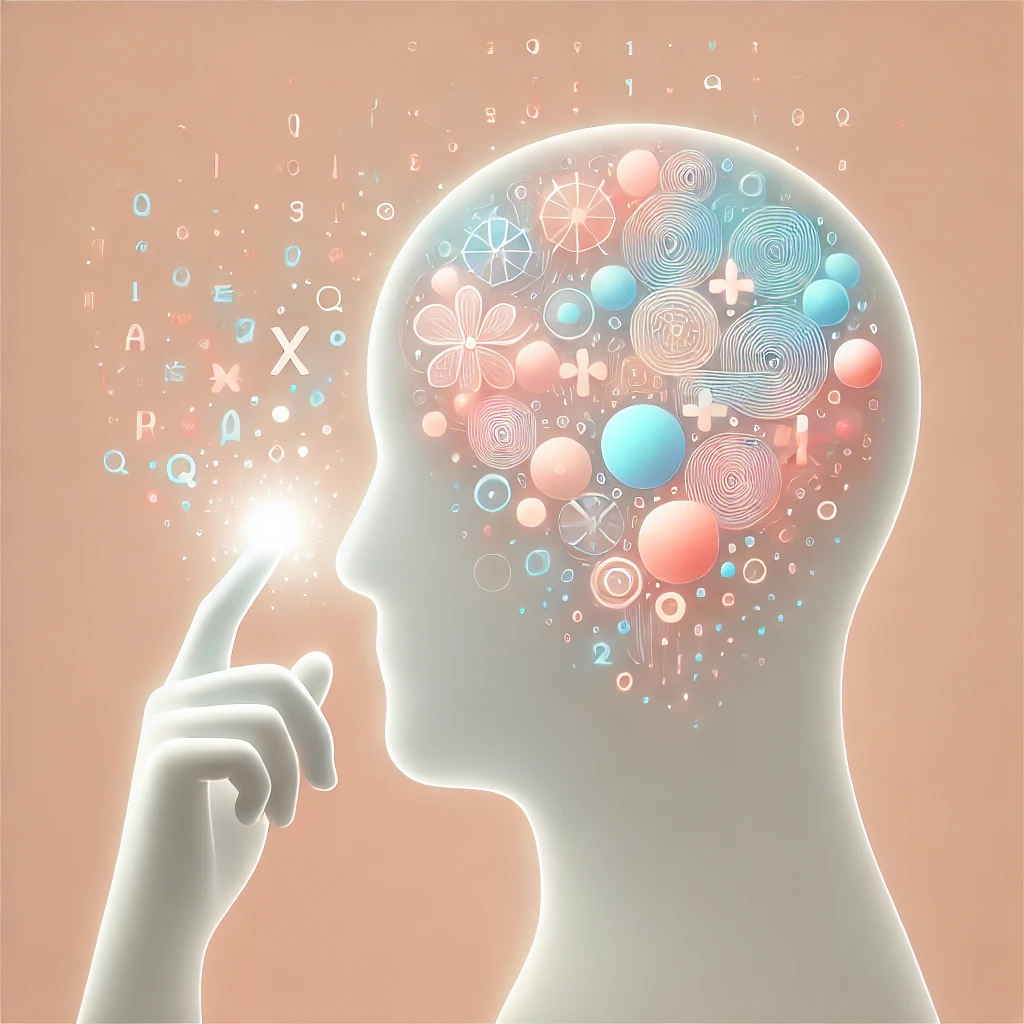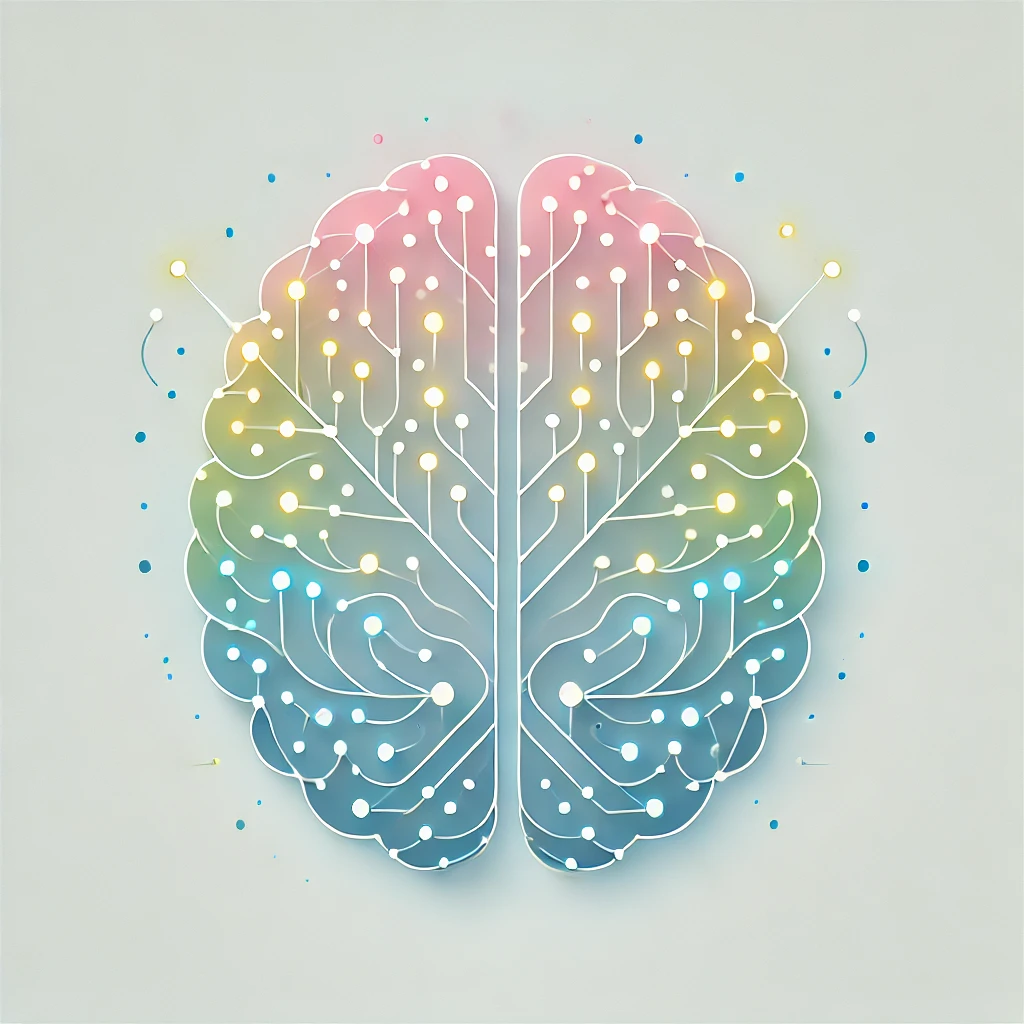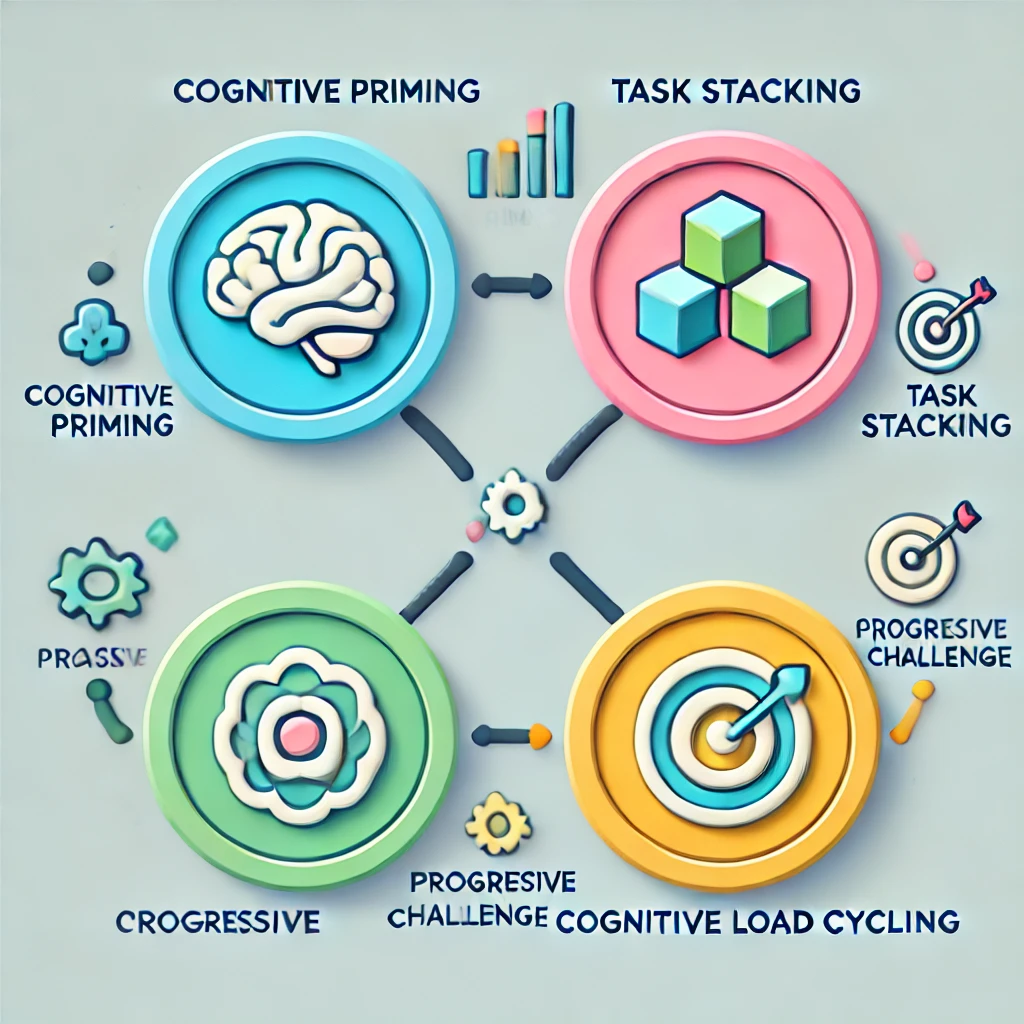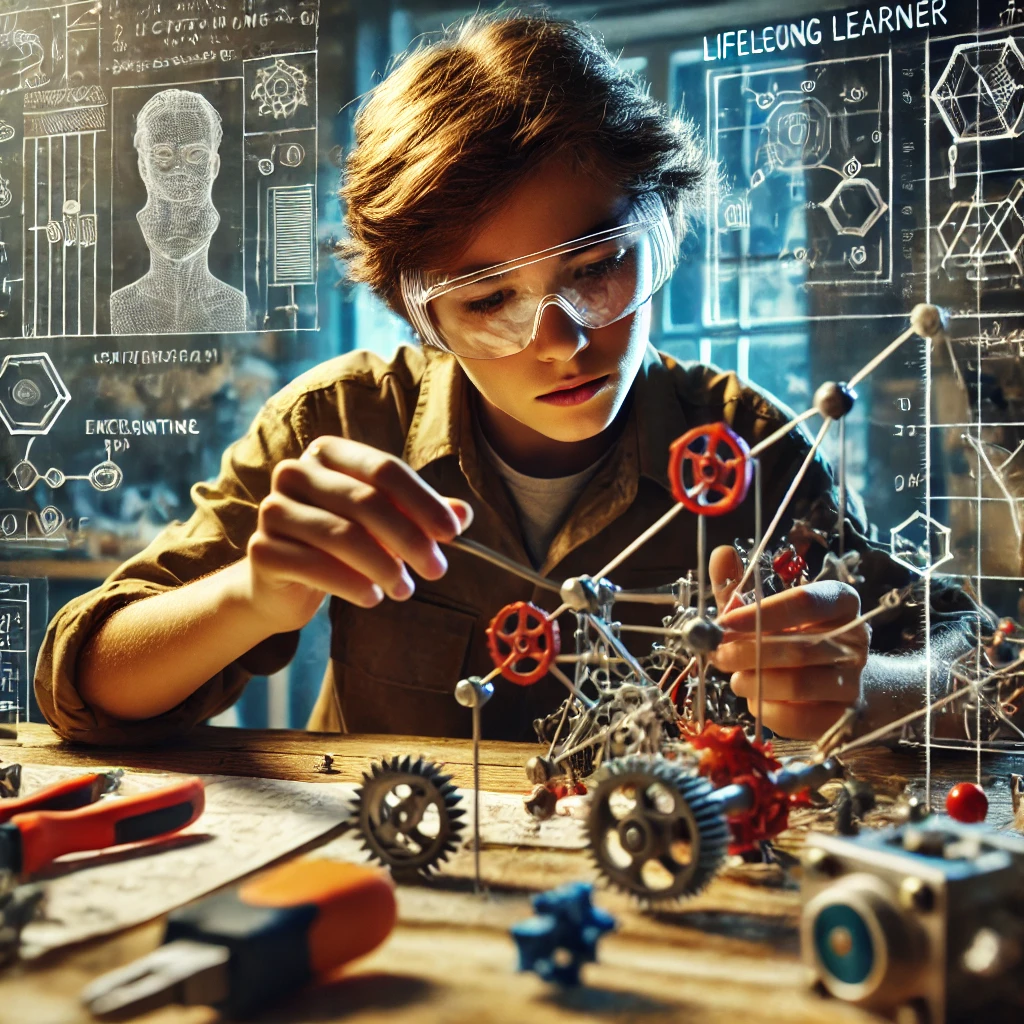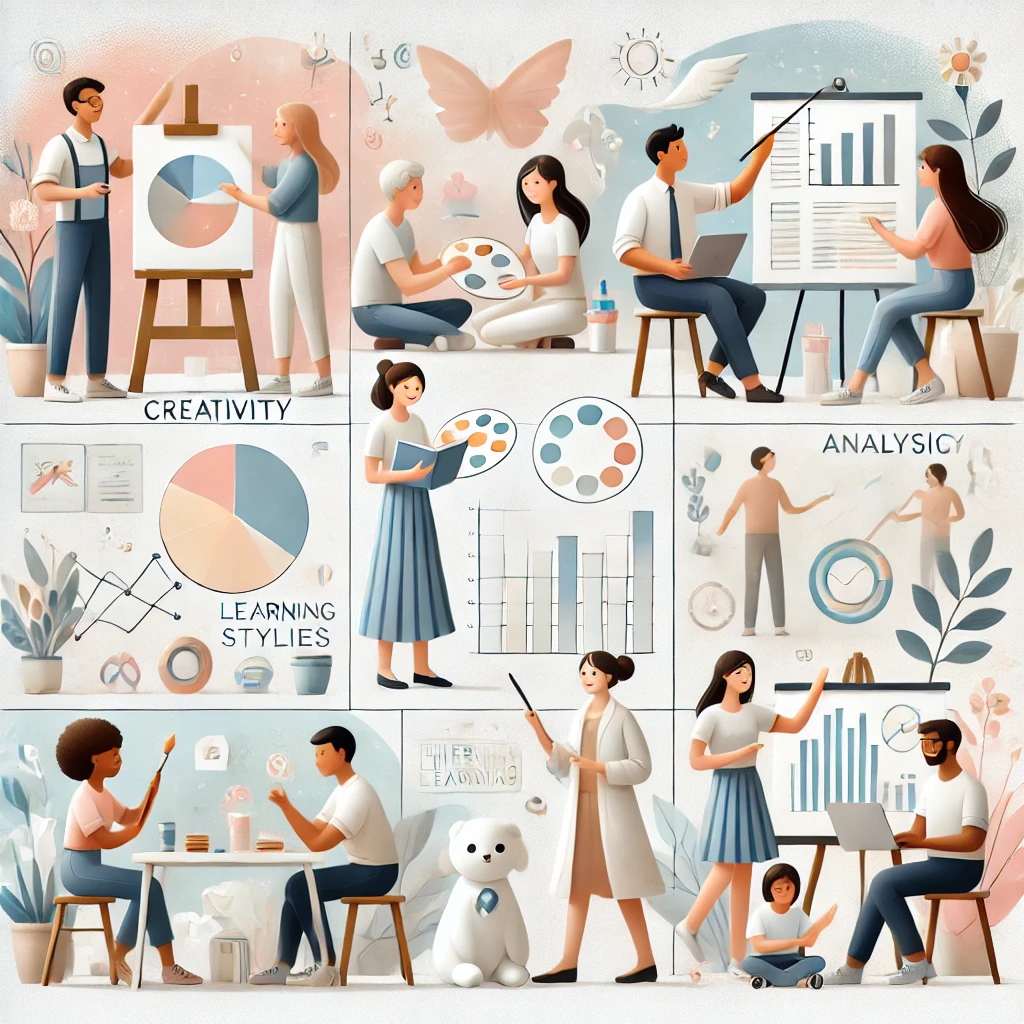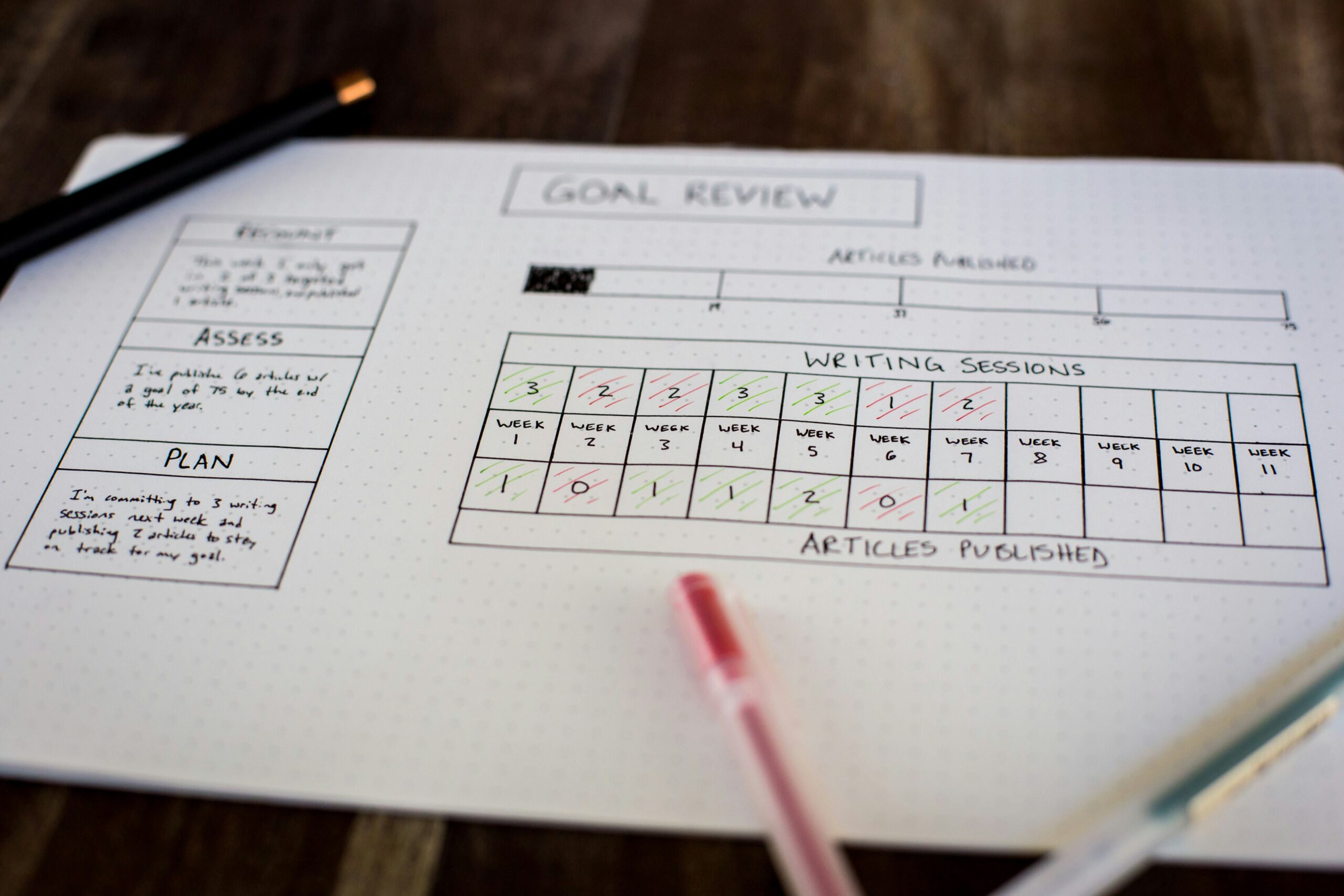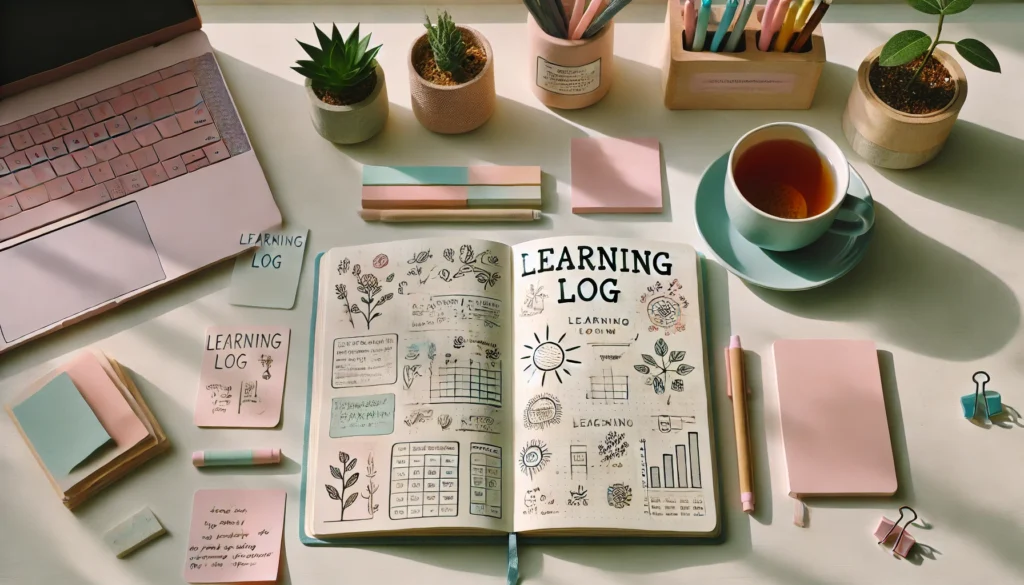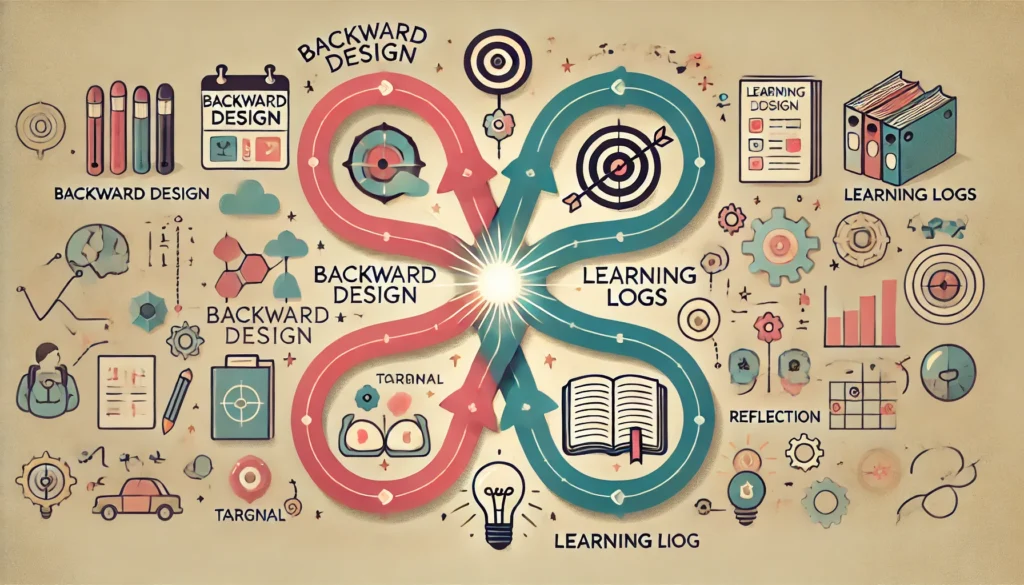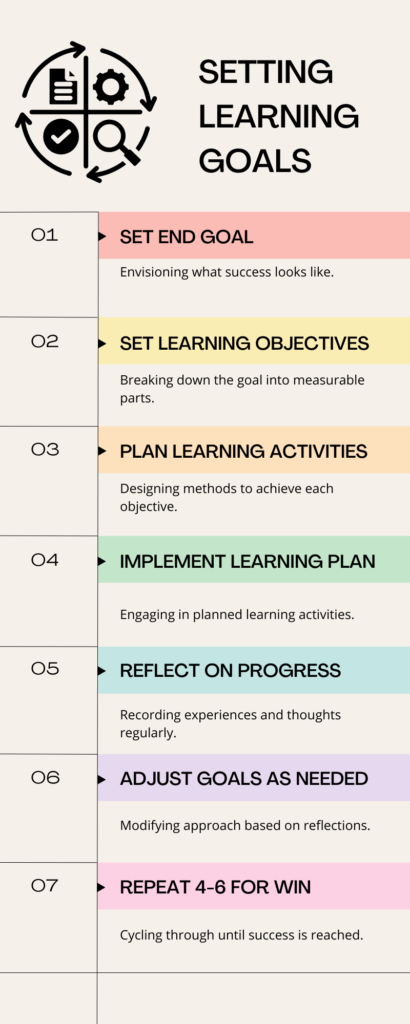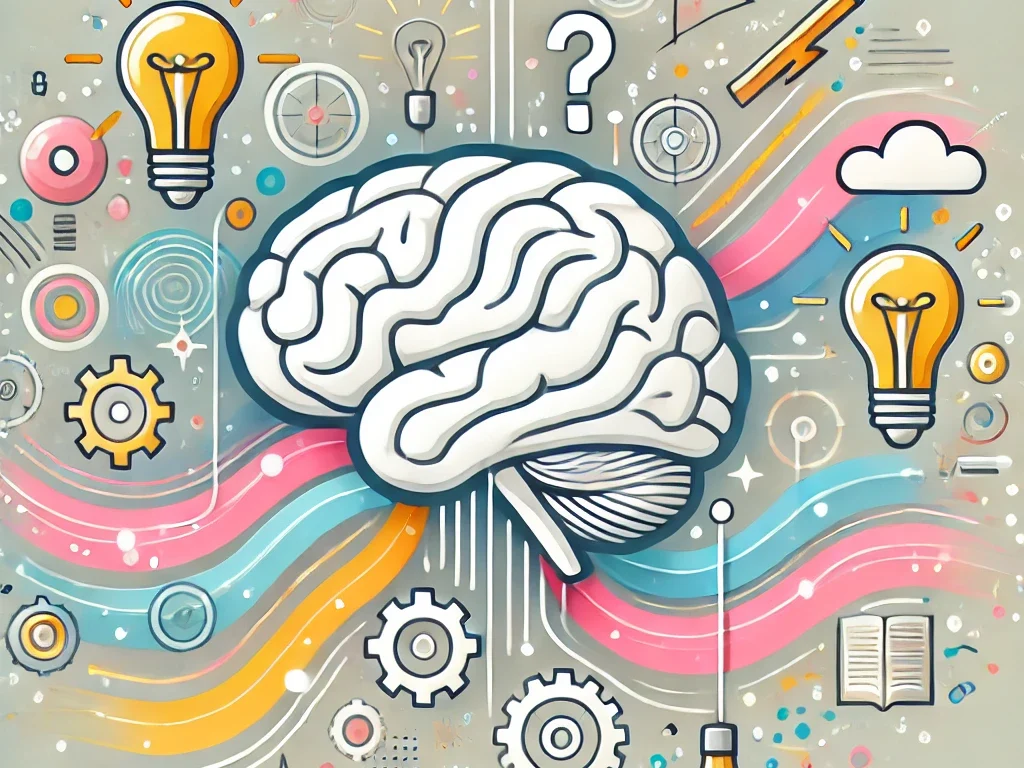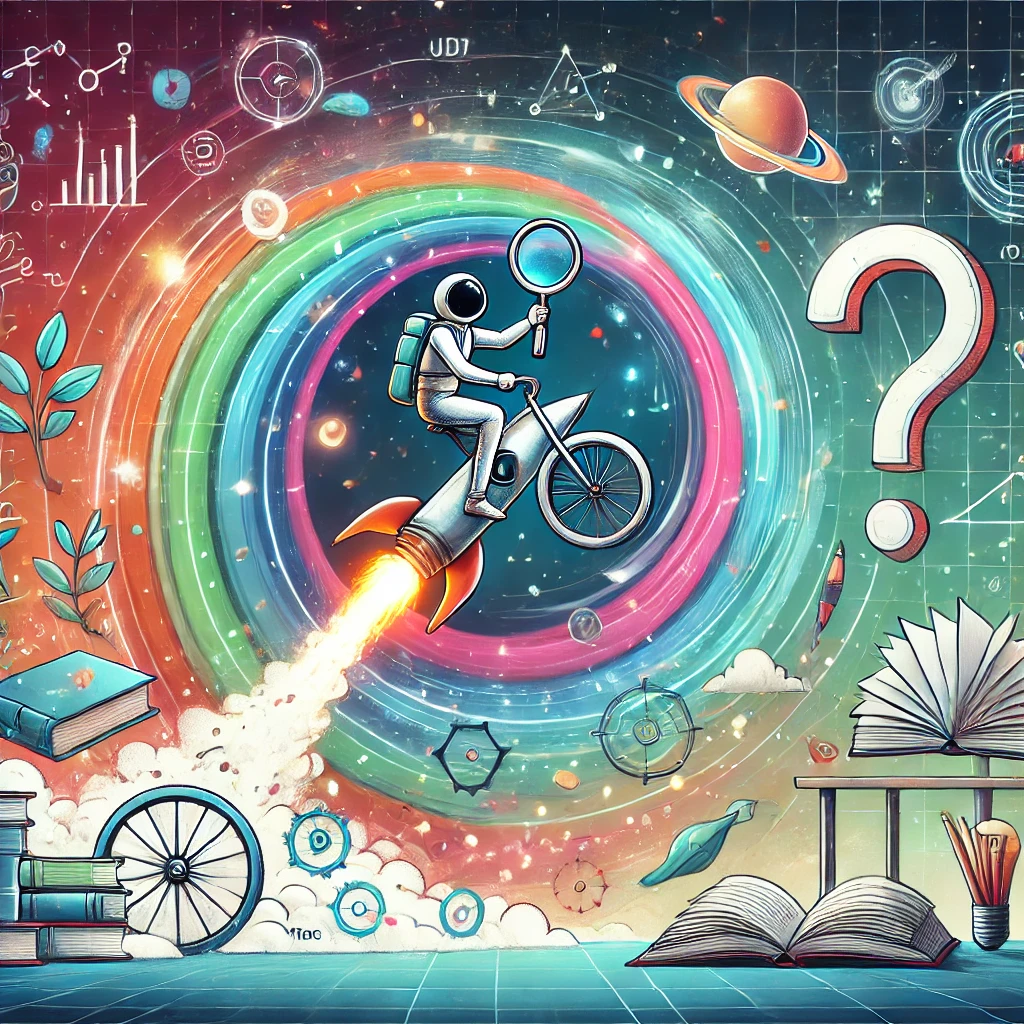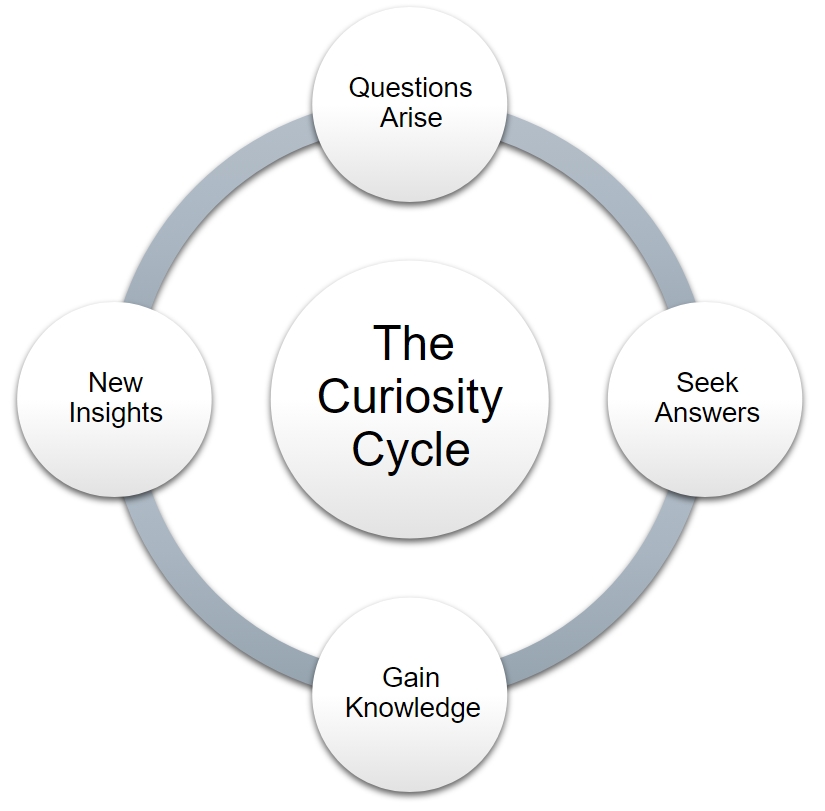In a world where knowledge and skills are the currency of success, the ability to learn efficiently and effectively has never been more critical. Accelerated learning isn’t just about absorbing information quickly; it’s about transforming the way you approach learning altogether. Whether you’re looking to enhance your professional skills, pursue personal growth, or simply keep up with the ever-evolving demands of the digital age, mastering the art of learning can unlock new opportunities and empower you to achieve your goals.
This comprehensive guide will explore the four pillars of accelerated learning: cultivating the right mindset, adopting effective learning techniques, enhancing memory and cognitive skills, and leveraging technology to maximize learning potential. By the end of this article, you’ll have a well-rounded understanding of how to accelerate your learning process and apply these insights to any area of your life.
Section 1: Building the Right Learning Mindset
The Foundation: Cultivating a Growth Mindset
Before you can excel in learning, you need to lay a strong foundation with the right mindset. The concept of a growth mindset, as introduced by psychologist Carol Dweck, is fundamental to accelerated learning. A growth mindset is the belief that intelligence and abilities can be developed through dedication, hard work, and learning from failures. This perspective contrasts with a fixed mindset, where individuals believe that their abilities are static and unchangeable.
In her groundbreaking research, Dweck found that individuals with a growth mindset are more likely to embrace challenges, persist in the face of setbacks, and see effort as the path to mastery. This mindset is not just a motivational tool; it’s a powerful predictor of success in learning and beyond.
“Having a growth mindset is essential for overcoming learning challenges. It shifts the focus from proving intelligence to improving intelligence,” explains an article on LearningForge about Developing a Growth Mindset for Effective Learning.
But how do you cultivate a growth mindset? It begins with self-awareness. Recognize the moments when you default to a fixed mindset—perhaps when you’re facing a difficult problem or when you’re tempted to give up on learning something new. Challenge these thoughts by reminding yourself that abilities can be developed with effort and practice.
Practical Tips for Cultivating a Growth Mindset:
- Embrace Challenges: Instead of avoiding difficult tasks, view them as opportunities to grow. When you encounter something challenging, remind yourself that this is where real learning happens.
- Learn from Criticism: Constructive feedback is one of the most valuable tools for growth. Rather than taking criticism personally, see it as a guide to improve your skills and knowledge.
- Celebrate Effort, Not Just Success: Focus on the process of learning rather than the outcome. Acknowledge the effort you put into learning, regardless of the immediate results.
- Reflect on Failures: Instead of seeing failure as a dead-end, reflect on what went wrong and how you can approach the problem differently next time. Failures are often the best learning experiences.
The Role of Motivation in a Growth Mindset:
Motivation is the driving force that propels us to pursue our goals. In the context of learning, motivation can be categorized into two types: intrinsic and extrinsic. Intrinsic motivation comes from within and is fueled by a genuine interest or enjoyment in the task itself. Extrinsic motivation, on the other hand, is driven by external rewards such as grades, recognition, or financial incentives.
While both types of motivation can be effective, research shows that intrinsic motivation is more sustainable and leads to deeper engagement with the learning material. When you are intrinsically motivated, you are more likely to persist through challenges and take ownership of your learning process.
Our article on The Power of Mindset: Transforming Your Learning Journey offers actionable tips for harnessing intrinsic motivation. One key strategy is to connect what you’re learning to your personal goals and interests. When you see the relevance of the material to your life, you’re more likely to stay motivated and engaged.
Another powerful motivator is curiosity. Curiosity is a natural driver of learning, prompting us to explore new ideas, ask questions, and seek out answers. By fostering a curious mindset, you can make learning a more enjoyable and rewarding experience.
Developing Resilience in Learning:
Resilience, or the ability to bounce back from setbacks, is another critical component of a growth mindset. Learning is not a linear process; it’s often filled with obstacles and failures. Resilient learners understand that setbacks are temporary and that persistence is key to overcoming them.
In our increasingly complex and fast-paced world, the ability to adapt and persevere in the face of challenges is essential. Building resilience involves developing a positive attitude towards failure, learning to manage stress, and maintaining a long-term perspective on your learning journey.
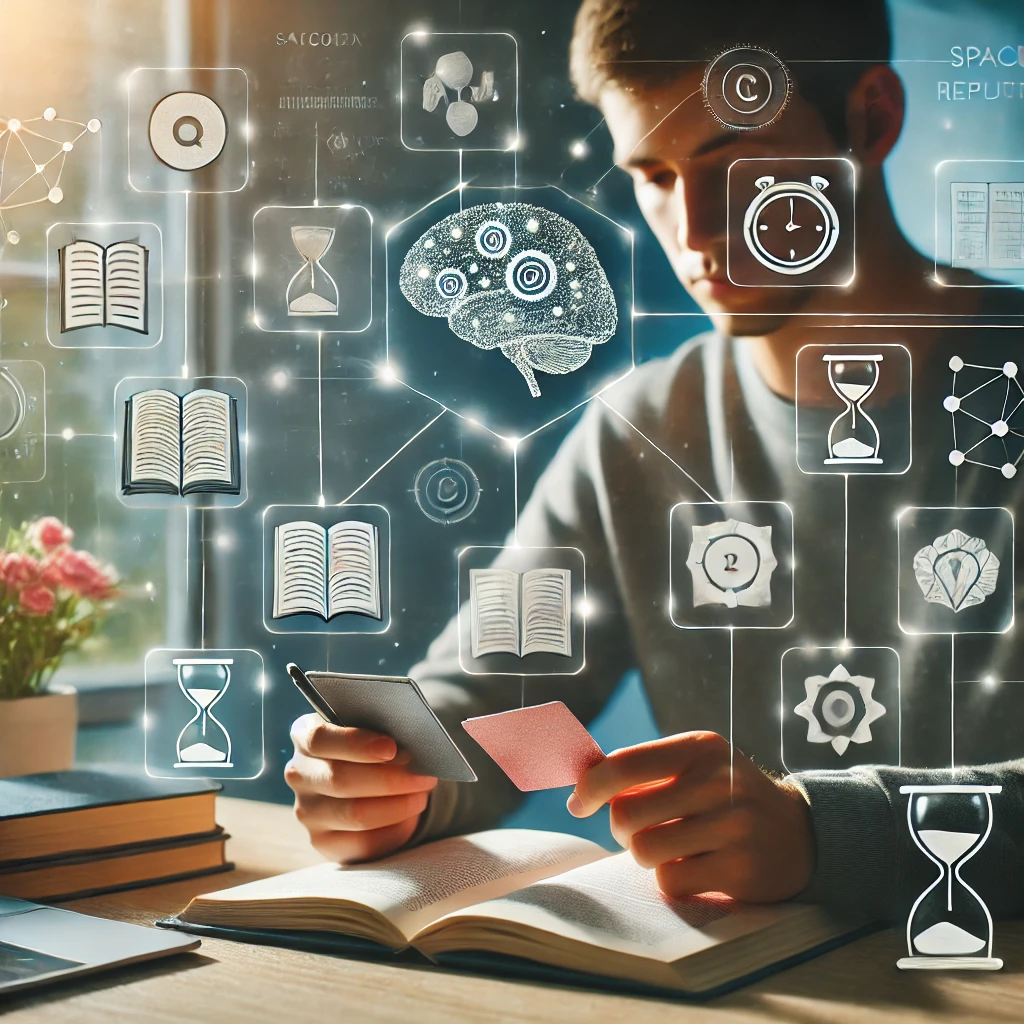
Section 2: Implementing Effective Learning Techniques
The Tools: Proven Techniques for Rapid Skill Acquisition
With a strong mindset in place, the next step in mastering learning is to adopt effective techniques that accelerate skill acquisition. The following are some of the most researched and validated methods for enhancing learning.
Spaced Repetition: The Science of Distributed Practice
One of the most effective techniques for improving memory retention is spaced repetition. This method is based on the principle that information is better retained when it is reviewed at intervals over time, rather than crammed in a single study session. The spacing effect, first identified by psychologist Hermann Ebbinghaus in the late 19th century, has been confirmed by numerous studies as a highly effective strategy for long-term retention.
In Leverage Spaced Repetition to Remember More by Studying Less, we explain how spaced repetition works and how to implement it in your study routine. One of the most popular tools for spaced repetition is Anki, a flashcard app that automatically schedules reviews based on your learning progress.
To use spaced repetition effectively:
- Break Down Information: Divide the material into smaller chunks and create flashcards or notes for each chunk.
- Schedule Reviews: Use a spaced repetition system (SRS) like Anki to schedule reviews at increasing intervals—starting with a few hours after initial learning, then days, weeks, and so on.
- Prioritize Difficult Material: Spend more time reviewing material that you find challenging and gradually reduce the frequency of reviews for information you have mastered.
Active Recall: The Power of Retrieval Practice
Another powerful technique for enhancing memory and understanding is active recall. This method involves actively testing yourself on the material rather than passively reviewing notes or reading. The act of retrieving information from memory strengthens neural connections and improves your ability to recall the information in the future.
In our article on The Essential Guide to Memory Enhancement: Revolutionary Techniques for Rapid Learning, we discuss how active recall can be integrated into your study routine to improve concentration and retention.
Steps to Implement Active Recall:
- Create Self-Tests: After studying a section of material, create questions based on the content. Try to answer these questions without looking at your notes.
- Use Flashcards: Flashcards are a practical tool for active recall. Write a question on one side of the card and the answer on the other. Test yourself regularly.
- Practice Retrieval: Regularly quiz yourself on previously learned material. The goal is to retrieve the information from memory without relying on cues or notes.
Interleaving: Mixing Up Practice for Better Learning
Interleaving is a learning technique that involves mixing different topics or skills in one study session rather than focusing on a single topic. While it may seem counterintuitive, research has shown that interleaving improves long-term retention and helps learners develop a deeper understanding of the material.
In Unlocking Rapid Learning with a Growth Mindset: Boost Your Skills Fast, we explore how interleaving can be incorporated into your study plans for more effective learning.
How to Use Interleaving:
- Mix Related Topics: Instead of studying one subject for an extended period, alternate between related topics or skills. For example, if you’re learning a language, switch between vocabulary, grammar, and conversation practice.
- Vary Problem Types: In subjects like math or science, practice different types of problems within a single study session. This approach helps you learn to apply concepts in various contexts.
- Review Regularly: Interleaving works best when combined with regular reviews of previously learned material, helping reinforce your understanding over time.
Elaboration: Deepening Understanding Through Explanation
Elaboration is the process of explaining and describing ideas in your own words, connecting new information to what you already know. This technique not only enhances understanding but also makes the material more memorable.
In our guide on Top 10 Learning Techniques for Rapid Skill Acquisition, we discuss how elaboration can be a powerful tool for deep learning.
How to Practice Elaboration:
- Teach Others: One of the best ways to practice elaboration is by teaching the material to someone else. This forces you to clarify your understanding and fill in any gaps in your knowledge.
- Make Connections: Relate new information to concepts you already know. This could involve comparing it to something familiar, identifying similarities and differences, or creating analogies.
- Summarize in Your Own Words: After learning a new concept, summarize it in your own words, focusing on the key points and connections.
The Feynman Technique: Simplifying Complex Concepts
Named after the famous physicist Richard Feynman, the Feynman Technique is a method for mastering complex concepts by breaking them down into simple, easy-to-understand explanations. This technique is particularly useful when you’re struggling to understand difficult material.
In Top 10 Memory Hacks for Lifelong Learners: Boost Your Brain Power, we explore how the Feynman Technique can be used to improve concentration and deepen your understanding.
Steps to Use the Feynman Technique:
- Choose a Concept: Start with a concept you want to understand better.
- Teach it to a Child: Explain the concept as if you were teaching it to a child or someone with no background knowledge. Use simple language and avoid jargon.
- Identify Gaps: As you explain, you may realize there are parts you don’t fully understand. Go back to the source material to fill in these gaps.
- Refine and Simplify: Repeat the process until you can explain the concept clearly and concisely.
The Pomodoro Technique: Maximizing Focus and Productivity
The Pomodoro Technique is a time management method that involves working in short, focused intervals (typically 25 minutes), followed by a short break. This technique helps maintain concentration and prevent burnout during study sessions.
In Top 10 Learning Techniques for Rapid Skill Acquisition, we explain how the Pomodoro Technique can be an effective tool for managing study time and improving focus.
Using the Pomodoro Technique:
- Set a Timer: Choose a task and set a timer for 25 minutes (a “Pomodoro”). Focus on the task until the timer rings.
- Take a Short Break: After the timer rings, take a 5-minute break to rest and recharge.
- Repeat: After four Pomodoros, take a longer break (15-30 minutes) to relax before starting the next cycle.
The Importance of Planning and Organization
Effective learning requires more than just good techniques; it also involves planning and organization. Without a clear plan, it’s easy to get overwhelmed or lose focus on your learning goals. In Craft Powerful Learning Goals with The Backward Design and Log Framework, we discuss the importance of creating a structured study plan that aligns with your objectives.
Steps to Create an Effective Study Plan:
- Set Clear Goals: Start by identifying what you want to achieve. Your goals should be specific, measurable, achievable, relevant, and time-bound (SMART).
- Break Down Goals: Divide your goals into smaller, manageable tasks. This makes the learning process less daunting and helps you track progress.
- Prioritize Tasks: Not all tasks are equally important. Prioritize them based on deadlines, difficulty, and relevance to your goals.
- Schedule Study Sessions: Plan when you will study each task. Be realistic about how much time you can dedicate and stick to the schedule as closely as possible.
- Review and Adjust: Regularly review your plan to assess your progress and make adjustments as needed. Flexibility is key to accommodating unexpected challenges or changes.
The Role of Reflection in Learning
Reflection is a critical but often overlooked aspect of the learning process. Taking the time to reflect on what you’ve learned, how you’ve learned it, and how you can apply it in the future can significantly enhance your understanding and retention.
In The Power of Mindset: Transforming Your Learning Journey, we discuss how reflection can be used to reinforce a growth mindset and improve learning outcomes.
Reflective Practices for Learning:
- Journaling: Keep a learning journal where you record what you’ve learned, how you felt during the process, and any challenges you encountered.
- Self-Assessment: Regularly assess your progress towards your learning goals. Identify what’s working, what’s not, and what changes you can make.
- Peer Feedback: Discuss your learning with peers or mentors and seek feedback. Others can provide valuable insights that you might have missed.
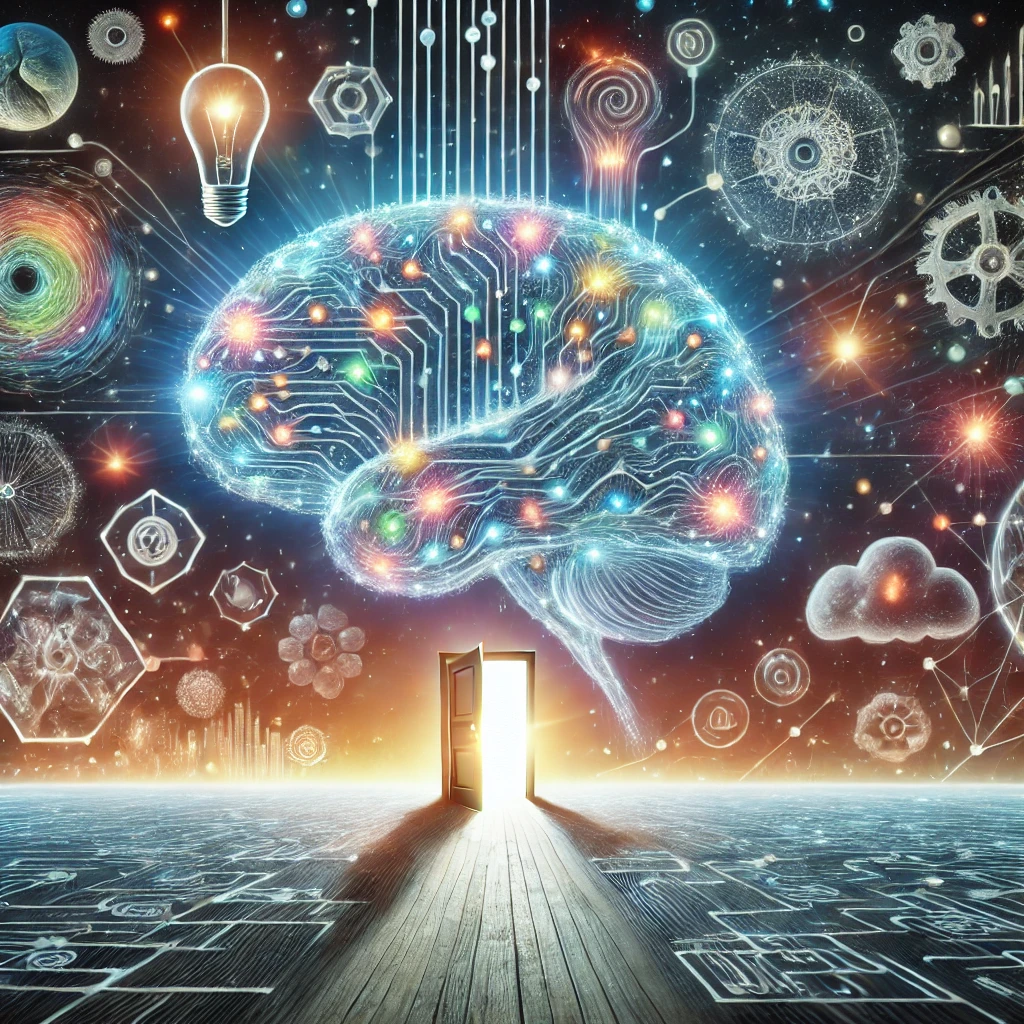
Section 3: Enhancing Memory and Cognitive Skills
The Brain: Boosting Memory and Cognitive Function
Understanding how your brain processes and stores information is key to optimizing your learning. Memory techniques and cognitive training can significantly enhance your ability to retain and recall information, which is crucial for accelerated learning.
The Science of Memory: How It Works
Memory is a complex process that involves encoding, storing, and retrieving information. There are three main types of memory:
- Sensory Memory: This is the shortest-term element of memory, where sensory information is retained for a brief moment (less than a second) before it is either discarded or transferred to short-term memory.
- Short-Term Memory (STM): Also known as working memory, STM holds a limited amount of information (about 7 items) for a short period (around 20-30 seconds). It’s the stage where conscious processing occurs.
- Long-Term Memory (LTM): Information that is rehearsed or deemed important is transferred from STM to LTM, where it can be stored indefinitely. LTM can hold a vast amount of information, and its capacity is believed to be unlimited.
The key to effective learning is transferring information from short-term to long-term memory and ensuring it can be easily retrieved when needed. This is where memory techniques and cognitive skills come into play.
Memory Techniques for Effective Learning
In our article, Top 10 Memory Hacks for Lifelong Learners: Boost Your Brain Power, we explore various memory techniques that can help you enhance your retention and recall abilities.
1. The Memory Palace (Method of Loci):
The Memory Palace, also known as the Method of Loci, is a mnemonic device that involves visualizing a familiar place (like your home) and associating the information you want to remember with specific locations within that place. This technique takes advantage of the brain’s ability to remember visual and spatial information more effectively than abstract concepts.
How to Create a Memory Palace:
- Choose a Location: Select a location you know well, such as your home or a route you take regularly.
- Visualize the Path: Mentally walk through this location and identify specific landmarks or rooms.
- Associate Information: Place the information you want to remember at each landmark. For example, if you’re trying to remember a list of items, visualize each item in a different room or spot along your path.
- Recall the Path: When you need to recall the information, mentally walk through the location and retrieve the information associated with each landmark.
2. Chunking:
Chunking involves breaking down complex information into smaller, more manageable units (chunks). The brain can only hold a limited number of items in short-term memory, so chunking helps increase the amount of information you can process at one time.
Examples of Chunking:
- Phone Numbers: Instead of trying to remember a 10-digit phone number as one long string, you break it into chunks (e.g., 123-456-7890).
- Learning a Language: When learning new vocabulary, group related words into categories (e.g., fruits, colors, emotions).
3. The Peg System:
The Peg System is a mnemonic technique where you associate numbers with specific words or images (pegs), which are then linked to the information you want to remember. This system is particularly useful for memorizing lists or sequences.
How to Use the Peg System:
- Create Pegs: Assign a word or image to each number (e.g., 1 = sun, 2 = shoe, 3 = tree).
- Associate Information: Link the items you want to remember with the corresponding pegs. For example, if you need to remember a grocery list, you might associate “apples” with the sun (1), “milk” with a shoe (2), and so on.
- Recall the Sequence: When recalling the list, simply think of the pegs in order and retrieve the associated items.
4. Visualization and Imagery:
The brain is particularly adept at remembering visual information. Visualization and imagery techniques involve creating vivid mental images that represent the information you want to remember.
Examples of Visualization:
- Remembering Names: To remember someone’s name, visualize the person doing something related to their name (e.g., if someone’s name is “Rose,” imagine them holding a bouquet of roses).
- Studying Anatomy: When learning about different organs in the body, visualize each organ in its correct location and imagine its function.
Neuroplasticity: Rewiring Your Brain for Learning
Neuroplasticity is the brain’s ability to reorganize itself by forming new neural connections throughout life. This ability is crucial for learning, as it allows the brain to adapt and change in response to new experiences, environments, and information.
In The Essential Guide to Memory Enhancement: Revolutionary Techniques for Rapid Learning, we explore how neuroplasticity can be harnessed to improve learning outcomes and cognitive function.
How to Enhance Neuroplasticity:
- Engage in New Activities: Challenge your brain by learning new skills, taking up new hobbies, or exploring unfamiliar topics. The more you expose your brain to novel experiences, the more it will develop new neural pathways.
- Practice Regularly: Repetition is key to strengthening new neural connections. Regular practice of a skill or knowledge area reinforces the pathways in your brain.
- Stay Physically Active: Exercise has been shown to increase neuroplasticity by promoting the growth of new neurons and enhancing cognitive function.
- Get Enough Sleep: Sleep is critical for memory consolidation and brain health. During sleep, the brain processes and stores the information learned during the day.
Metacognition: Thinking About Thinking
Metacognition refers to the awareness and regulation of one’s own learning processes. It involves thinking about how you learn, monitoring your understanding, and adjusting your strategies as needed. Metacognitive skills are essential for self-directed learning and improving learning outcomes.
In Mastering Learning Techniques: A Comprehensive Guide to Effective Skill Acquisition, we discuss how metacognition can be developed and applied to enhance learning.
Metacognitive Strategies:
- Self-Questioning: Ask yourself questions before, during, and after learning. Examples include: “What do I already know about this topic?”, “What strategies can I use to understand this better?”, and “How well did I understand this material?”
- Plan, Monitor, and Evaluate: Before starting a learning task, plan how you will approach it. During the task, monitor your progress and make adjustments if necessary. After completing the task, evaluate your performance and identify areas for improvement.
- Reflect on Learning Experiences: Regularly reflect on your learning experiences. Consider what strategies worked, what didn’t, and how you can improve in the future.
Cognitive Load Theory: Managing Mental Effort
Cognitive Load Theory (CLT) suggests that the brain has a limited capacity for processing information. When cognitive load is too high, learning becomes difficult and less effective. Understanding and managing cognitive load is crucial for optimizing learning.
In The Flow State Formula: How to Get ‘In the Zone’ Every Time You Study, we explore how cognitive load can be managed to enhance memory and understanding.
Strategies for Managing Cognitive Load:
- Simplify Information: Break down complex information into smaller, more manageable chunks. Use visuals, diagrams, or summaries to simplify the material.
- Practice Dual Coding: Combine verbal information with visual representations (e.g., diagrams, charts) to help distribute cognitive load and improve understanding.
- Reduce Extraneous Load: Minimize distractions and irrelevant information that can overload your cognitive capacity. Focus on the essential material and remove any unnecessary details.
The Role of Sleep, Nutrition, and Exercise in Cognitive Function
While learning techniques and cognitive strategies are important, they are only part of the equation. Your brain’s health and performance are also influenced by your lifestyle choices, including sleep, nutrition, and exercise.
Sleep: Adequate sleep is essential for memory consolidation and cognitive function. During sleep, the brain processes and stores the information learned during the day. Lack of sleep can impair concentration, decision-making, and learning ability.
Nutrition: A balanced diet rich in nutrients such as omega-3 fatty acids, antioxidants, and vitamins supports brain health. Foods like fish, nuts, berries, and leafy greens are particularly beneficial for cognitive function.
Exercise: Physical activity promotes blood flow to the brain, increases neuroplasticity, and improves mood and concentration. Regular exercise has been linked to better memory, learning, and overall cognitive performance.
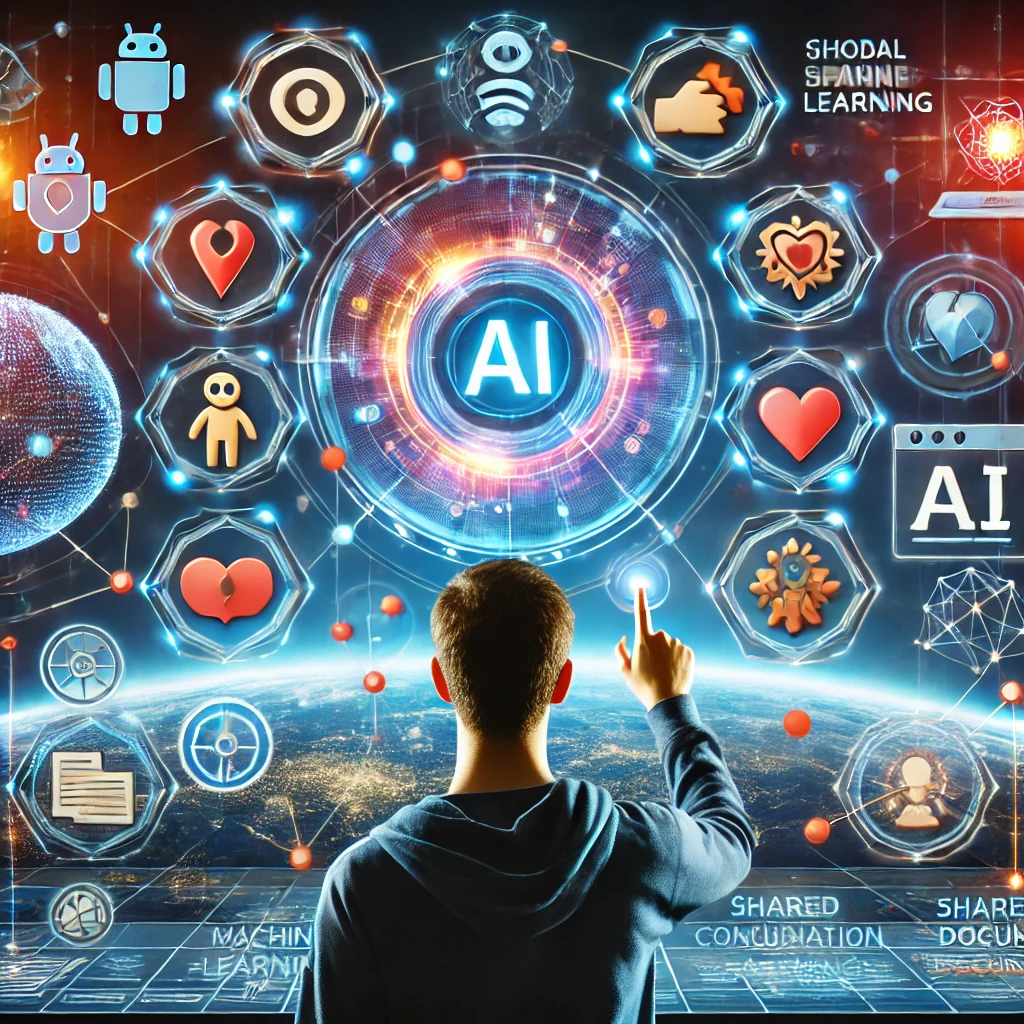
Section 4: Leveraging Technology for Enhanced Learning
The Future: How Technology and Innovation Are Transforming Learning
Technology has revolutionized the way we learn, making education more accessible, personalized, and engaging. From online courses to gamified learning platforms, technological advancements are opening new avenues for learners of all ages.
The Rise of Online Learning Platforms
Online learning platforms like Coursera, edX, and Khan Academy have democratized education by providing access to high-quality courses from top universities and institutions around the world. These platforms offer a wide range of subjects, allowing learners to pursue interests, develop new skills, and earn certifications from the comfort of their homes.
In The Future of Learning: How Technology is Transforming Learning, we discuss how online platforms are incorporating gamification and other interactive elements to enhance the learning experience.
Benefits of Online Learning Platforms:
- Accessibility: Online courses are accessible to anyone with an internet connection, making education available to people regardless of their location or background.
- Flexibility: Learners can study at their own pace, fitting education into their schedules without the constraints of traditional classroom settings.
- Personalization: Many online platforms use algorithms to recommend courses and materials based on a learner’s interests, goals, and progress, creating a personalized learning experience.
Gamification: Making Learning Fun and Engaging
Gamification involves applying game design elements, such as points, badges, and leaderboards, to non-game contexts like education. This approach has been shown to increase motivation, engagement, and retention by making learning more interactive and enjoyable.
How Gamification Enhances Learning:
- Increased Motivation: Gamification taps into intrinsic motivation by providing immediate feedback, rewards, and a sense of accomplishment, encouraging learners to keep progressing.
- Active Participation: Games require active participation, which helps learners stay engaged and retain information more effectively.
- Collaborative Learning: Many gamified platforms include social elements, such as team challenges and peer interaction, fostering collaboration and shared learning experiences.
Personalized Learning: Tailoring Education to Individual Needs
Personalized learning is an approach that tailors education to the unique needs, strengths, and interests of each learner. By leveraging data and technology, personalized learning platforms can adapt content, pace, and assessments to match a learner’s individual profile.
In AI’s Impact on Personalized Learning: What It Means for You, we discuss how personalized learning is transforming education and helping learners achieve better outcomes.
Benefits of Personalized Learning:
- Adaptive Learning Paths: Personalized platforms use algorithms to create adaptive learning paths that adjust to a learner’s progress, ensuring they are challenged without becoming overwhelmed.
- Targeted Feedback: Personalized learning systems provide targeted feedback based on a learner’s performance, helping them identify areas for improvement and focus their efforts.
- Self-Paced Learning: Learners can progress at their own pace, spending more time on challenging concepts and moving quickly through material they already understand.
Collaborative Tools and Platforms for Enhanced Learning
Collaboration is a key component of effective learning. Collaborative tools and platforms enable learners to connect, share knowledge, and work together on projects, regardless of their physical location.
In The Future of Learning: How Technology is Transforming Learning), we explore how technology is facilitating collaboration and enhancing learning outcomes.
Examples of Collaborative Tools:
- Google Workspace: Google Workspace (formerly G Suite) offers a suite of tools like Google Docs, Sheets, and Slides that allow real-time collaboration on documents, spreadsheets, and presentations.
- Slack: Slack is a communication platform that enables teams to collaborate through channels, direct messaging, and file sharing. It’s particularly useful for group projects and remote learning.
- Trello: Trello is a project management tool that uses boards, lists, and cards to help teams organize tasks, track progress, and collaborate on projects.
The Future of Learning: Artificial Intelligence and Machine Learning
Artificial intelligence (AI) and machine learning are poised to revolutionize education by creating even more personalized and adaptive learning experiences. AI-powered tools can analyze a learner’s behavior, preferences, and performance to deliver customized content and support.
In AI’s Impact on Personalized Learning: What It Means for You, we touch on how AI is being integrated into learning platforms to enhance engagement and outcomes.
Potential Applications of AI in Education:
- Intelligent Tutoring Systems: AI can provide personalized tutoring and guidance, helping learners understand complex concepts and stay on track with their studies.
- Automated Assessment: AI can grade assignments, quizzes, and exams with high accuracy, providing immediate feedback and reducing the workload for educators.
- Predictive Analytics: AI can predict a learner’s future performance based on their current progress, helping educators identify at-risk students and intervene early.

Conclusion
Mastering the art of learning is a lifelong journey that requires a combination of the right mindset, effective techniques, cognitive skills, and the strategic use of technology. By integrating these elements into your learning practice, you can accelerate your progress, overcome challenges, and achieve your goals more efficiently.
At LearningForge, we are committed to helping you unlock your full potential through accelerated learning. Explore our extensive collection of articles for more insights and strategies, and consider subscribing to our newsletter to stay updated on the latest in learning science and technology.
Call to Action
Are you ready to take your learning to the next level? Start applying the strategies you’ve learned in this guide, and don’t forget to explore related articles on LearningForge to deepen your understanding. Sign up for our newsletter to receive regular updates, tips, and resources that will help you master any skill faster.
References
Dweck, Carol S. (2006). Mindset: The New Psychology of Success. Random House.
- This book introduces the concept of a growth mindset and its impact on learning and success.
Ebbinghaus, Hermann (1885). Über das Gedächtnis. Untersuchungen zur experimentellen Psychologie [On Memory: A Contribution to Experimental Psychology]. Duncker & Humblot.
- This work by Hermann Ebbinghaus is foundational in memory research and introduces the spacing effect, which is the basis for spaced repetition.
Roediger, Henry L., & Butler, Andrew C. (2011). The Critical Role of Retrieval Practice in Long-Term Retention. Trends in Cognitive Sciences, 15(1), 20-27.
- This study emphasizes the effectiveness of active recall (retrieval practice) in enhancing long-term memory retention.
Brown, Peter C., Roediger, Henry L., & McDaniel, Mark A. (2014). Make It Stick: The Science of Successful Learning. Harvard University Press.
- This book explores effective learning strategies, including active recall, interleaving, and elaboration.
Ericsson, K. Anders, Krampe, Ralf T., & Tesch-Römer, Clemens (1993). The Role of Deliberate Practice in the Acquisition of Expert Performance. Psychological Review, 100(3), 363-406.
- This seminal study discusses the role of deliberate practice in skill acquisition and expertise development.
Bransford, John D., Brown, Ann L., & Cocking, Rodney R. (2000). How People Learn: Brain, Mind, Experience, and School: Expanded Edition. National Academies Press.
- This comprehensive book provides an overview of learning science, including cognitive load theory and the role of reflection in learning.
Zhao, Hong, et al. (2017). Cognitive Load Theory: Updates and Implications for Instructional Design. Educational Psychology Review, 29(2), 329-339.
- This paper reviews the cognitive load theory and its implications for instructional design and learning.
Draganski, Bogdan, et al. (2004). Neuroplasticity: Changes in Grey Matter Induced by Training. Nature, 427(6972), 311-312.
- This study demonstrates the brain’s ability to change its structure (neuroplasticity) in response to learning new skills.
Smith, Steven M., & Kosslyn, Stephen M. (2007). Cognitive Psychology: Mind and Brain. Pearson.
- This textbook provides an in-depth overview of cognitive psychology, including memory processes and metacognition.
Bavelier, Daphne, et al. (2012). The Effects of Action Video Game Experience on the Time Course of Inhibition of Return and the Efficiency of Visual Search in Human Participants. Psychological Science, 23(8), 821-828.
- This study examines the cognitive benefits of certain types of video games, which is relevant to discussions on gamification in learning.




